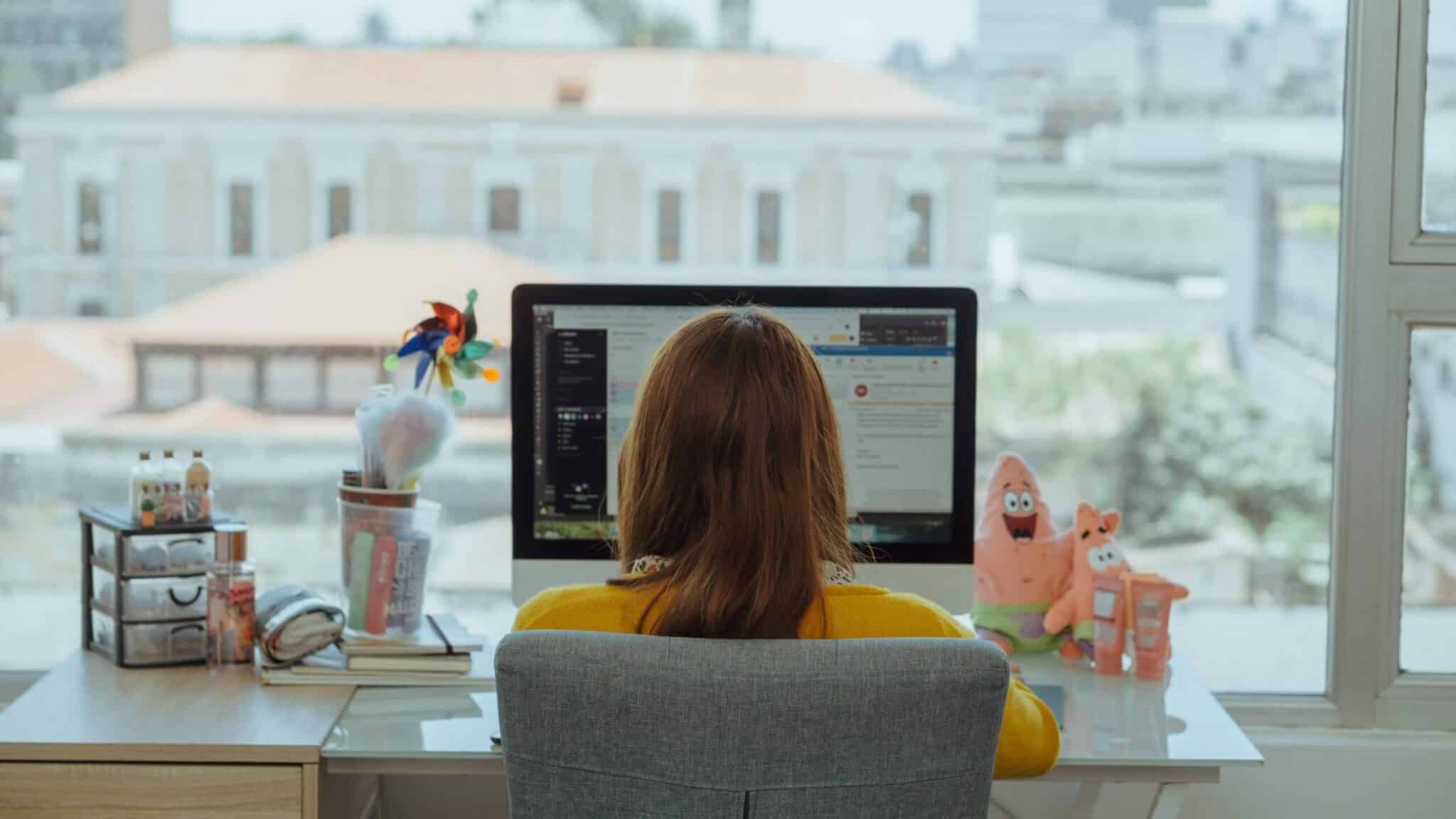Is working from home here to stay? Are employees getting their work done, or has productivity taken a nosedive? And why are some companies thriving with remote work while others are struggling to adapt?
These are just some of the questions workplace trends guru Kate Lister is aiming to answer with her latest project, the Global Work From Home Experience Survey.
Nearly 3000 respondents shared their work from home (WFH) experience during the pandemic, and the support for remote work was loud and clear.
- 68% of respondents felt they were very successful working from home
- 76% of respondents want to WFH at least 1 day per week after COVID-19, while 16% don’t want to come back to the office at all
- WFH employees are saving 1/2 an hour per day in unwanted interruption and give back half of their saved commute time to additional work time
- The majority of respondents would be willing to give up their assigned desk if they could continue to WFH
As a recognized thought leader on remote work and President of Global Workplace Analytics, Kate is leading the global conversation on how the pandemic will impact the future of work for facilities teams, employers, and employees.
We asked Kate to help us unpack the survey’s findings and share how companies will need to adapt their WFH strategies in a post-coronavirus world.
You’ve spoken at length about the benefits of working from home. How has the COVID-19 crisis changed the typical work from home (WFH) experience?
Lister: Well, the impact of COVID-19 hasn’t been ideal.
The data we’re seeing from the Work From Home Experience Survey is that about half of the people that are working from home have not done it before. So there’s a lot of floundering around in the deep end while people get used to the technology and the protocols that support remote work.
Having said that, the survey is also showing that people are very resilient. They are adapting quickly. And technology is not any more of a problem than it was in the office.

Did any of the results from the survey surprise you?
Lister: Before COVID-19, employees not wanting to give up their desk at the office was a huge barrier to remote work. So it was really surprising to see that the majority of respondents were willing to give up their assigned seat for the opportunity to work from home multiple days a week.
It was also pretty fascinating to see that the level of workday interruptions was actually going down in spite of the added WFH challenges employees were dealing with thanks to COVID-19.
Overworking also came up in the results, and that one’s a big concern. People are having trouble adapting to a remote-work schedule, and they feel obligated to be available 24/7.
Results also showed that employees give back 50 to 60 percent of the time they would have otherwise spent commuting.
“If a company doesn’t have a dedicated Workplace Experience Manager on staff, it’s very important to have a cross-functional team to approach Work From Home intentionally and strategically rather than tactically.”
— Kate Lister, President, Global Workplace Analytics
Could this sudden global shift to remote work make some people assume that WFH is a terrible idea?
Lister: Definitely. That was one of my concerns coming out of this. That people would have a disastrous experience and never want to do it again. But that’s not what our data is showing.
We had nearly 3000 respondents to the survey, and only 7% of the people that are working from home said they want to fully return to the workplace after COVID-19, while 76% said they want to work from home one or more days a week.
Based on the results we’re seeing, the sweet spot is to work remotely for two to three days per week.
“The typical employer can save about $11,000 per half-time remote worker per year. But they’re not going to get those savings unless they’re approaching it strategically.”
— Kate Lister, President, Global Workplace Analytics

Why have some companies struggled with the transition to WFH more than others?
Lister: We’re finding that a lack of tools is the most common issue for companies struggling with the transition to remote work right now. Things like knowing how to run a Zoom meeting, knowing how to collaborate with someone virtually, learning how to use Google Docs or Microsoft Teams or Slack.
The other part of the problem is having the right protocols in place to work and communicate effectively with your teammates. Everybody’s a little bit “Zoom exhausted” at the moment, because everybody wants to be on a video call so they can see each other.
Another common issue is that people are trying to over communicate. That’s quite common when employees first start working from home. The boss wants to make sure that the employee is working and vice versa.
We also need to keep in mind that these are not ordinary times. In addition to their workload, remote employees are also managing a lot of worry about COVID-19, about the economy. They’ve got children at home, they’re trying to share bandwidth with everybody in the household, maybe working at the dining room table and a chair that isn’t very comfortable.
Is there a high-level process companies can follow to set up remote working the right way?
The first step is getting the right tools in place and helping employees become comfortable using those tools.
Next are the protocols. How should we communicate as a company? What are the guidelines we’ll be following in this new WFH setup? What are our standard working hours?
One of the things that we’re seeing is that people are working online for much longer when they work from home. But part of that is because they’re interspersing their work and home life. So the workday becomes more of a balance rather than a strict start and end. To provide some flexibility around this, most companies establish a small block of core hours where everyone is expected to be available.
And the third step is to get the company’s specific remote-work policies in place. Who’s going to pay for the home office equipment? What are my working hours?

Can you recommend any resources that organizations could use to create a better work from home experience for their people?
All Remote is GitLab’s 600-page employee manual to remote work. The chapters on remote work and communication walk readers through every aspect of working efficiently as a remote team. How to organize your day, how to adjust your tone when you’re using email, when to use audio and video for your meetings.
REMOTE: Office Not Required is a great read on developing a remote-friendly culture.
And the International Facilities Management Association (IFMA) just came out with a free Pandemic Preparedness Manual. I wrote the appendix on remote work, which includes all of the things that each organizational unit should be thinking about.
“Unfortunately, technologies are emerging for what I call “Virtual Babysitting”. Apps that track keystrokes, programs that require employees to check in every hour or stay on video 24/7. Total micromanagement by technology.
“I hope that we all learn to manage remote employees by results before that technology takes hold.”
— Kate Lister, President, Global Workplace Analytics
What do you think the return to the workplace will look like?
I think the return to the workplace is going to be pretty jarring, just because of the way we’re going to have to return.
Companies and consultants I’ve talked to aren’t even considering more than 50% occupancy before the end of the year. And the majority are aiming for the 25 to 30% range.
In preparation for six-foot workplace distancing, companies are taking the chairs out of the conference room, closing the conference, conference rooms all together, removing every other chair in the office. And they just won’t be able to accommodate 100% of their workforce.

Once COVID-19 is fully under control, do you think working from home will be phased out? Or is it here to stay?
I think there are several factors that are going to accelerate this work from home trend as the world recovers from COVID-19.
The first is that people want it. For years, flexibility in when and where employees work has been the number one benefit requested by job candidates of all ages.
The second factor is that we’re going to see an increase in the number of employees and managers who want to work remotely. Before COVID-19, 50% of employees had never worked remotely before and didn’t even think they wanted to do it. But now that they’ve had to experience it during the pandemic, many of them now want to keep working from home in some capacity.
We should also expect a push for remote flexibility from the top of the organization. CEOs are probably lying awake at night thinking of all those big buildings with nobody in them that they’re paying for. They’ll be coming out of this saying “Maybe we don’t really need all that space. Let’s start thinking about new strategies.”
Another area to consider is risk management and shareholders. Companies got caught with their pants down here. Many were not ready to weather a pandemic, financially or otherwise.
And lastly, sustainability. In a matter of weeks, we’re seeing cleaner air thanks to less people commuting to and from work every day. I think that’s really going to stay with people and drive the work from home trend.
How will the role of the facilities manager evolve as workplaces move to a semi- or fully-remote setup in the wake of COVID-19?
Without doubt, it’s going to ramp up the importance of the Facility Manager’s role within an organization. Before the pandemic, FMs were sort of the unseen hero. I think companies are going to have more respect for the job that facility managers do, and the importance of the role.
Facilities managers are going to be very busy for a year or two just figuring out how to navigate the return to the workplace.
How are we going to bring people back to the building? How are we going to clean, even though we can’t get the supplies because everything’s on back order? What should we be cleaning with? Do we have to worry about Legionnaires disease because the water has been sitting in the air conditioning units. What do we do about that? How does our strategy need to change every time COVID-19 guidelines are updated?
I also think that COVID-19 and the increase in remote work is going to accelerate the need for more automation and technology in the workplace—cleaning with robots, overseeing and managing buildings remotely.

What are your hopes for the future of work in a post-Coronavirus world?
One of my hopes coming out of this is that we develop a sense of empathy. And that by allowing people into our lives in our homes, we will democratize work in a way.
These days we’re all seeing the CEO sitting there in his armchair talking like a real person and his dog walks by. We’re seeing our colleagues in their homes with their children.
I think that when you see your peers on a personal level, it reminds you that they are people. They’re not just these automaton bots that get stuff done at the office.
So perhaps a hope, not a recommendation, is that we all give each other some kind of a virtual hug and a break.
Kate Lister is a global expert on telecommuting and the future of work, and president of Global Workplace Analytics, a research-based consulting firm that has been helping public and private sector employers understand and implement new ways of working for more than a decade.
Download the results of the Work From Home Experience survey here.
Want actionable insights and strategies from workplace leaders delivered straight to your inbox? Subscribe to Workplace Unplugged.
Photos: Dylan Ferreira, SHTTEFAN, Alvaro Reyes, Marc Mueller, Andrea Piacquadio






